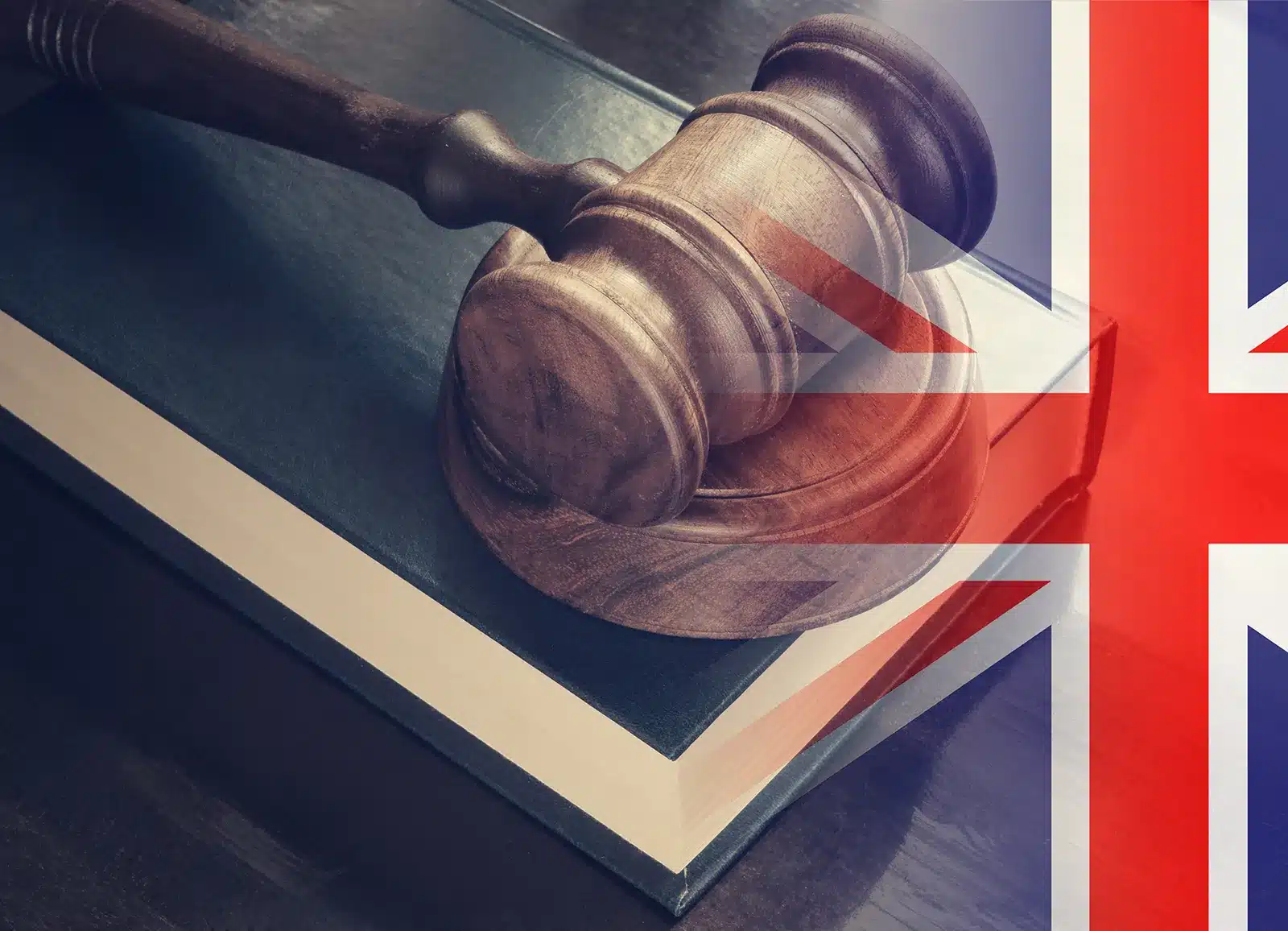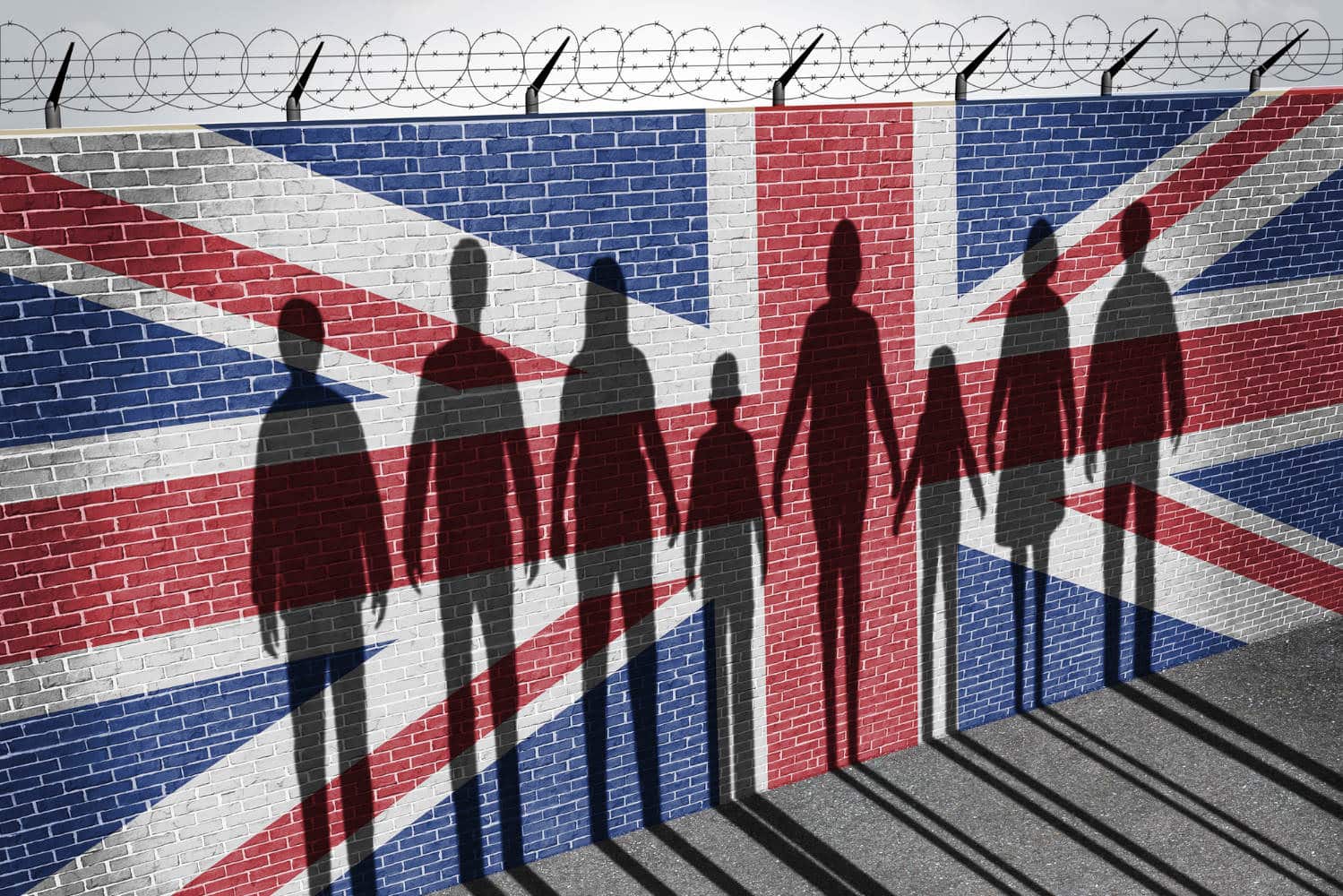Spouse, unmarried partner, civil partner or Fiancé? This guide is for you!
Joining a loved one in the UK or being able to continue living with a loved one in the UK, might well be the most important thing in your life. Unfortunately, you will need a spouse or Partner visa, which will mean navigating a host of complex legal and procedural requirements.
Whether you are applying for the initial spouse or Partner visa, known as ‘entry clearance’, or whether you have already been granted the initial visa and are now looking to extend your ‘leave to remain’, this detailed legal guide is for you.
Our Immigration team at Truth Legal is highly experienced in assisting individuals with their spouse or Partner visa applications. We pride ourselves on providing an ethical and honest service to all our clients. We are based in Harrogate, Leeds and Hull, but help clients throughout the UK and the wider world.
Do not hesitate to contact us today for a no-obligation, free consultation.
How to use this guide
You might be unsurprised to read about a law firm covering its own back by issuing a disclaimer in a legal guide. But you really do need to be careful in how you use the information contained here.
We have tried to condense many years of practical experience into this guide. However, immigration law changes at a remarkably fast pace. Although we will try to keep this guide up to date, it is unlikely that we will be able to keep it perfectly up to date.
Use this guide to get an insight into the requirements of the spouse or partner visa and the challenges you will face. However, always check what the latest law and procedure is. As we explain below, spouse or partner visa applications have become so tricky that we would generally advise that you get legal assistance from an immigration specialist. Enjoy!
The spousal relationship is the most common type of partnership we see in these applications, so we will simply refer to a ‘spouse visa’ from now on, for ease of reference. However, our advice in this guide is aimed at anyone who meets the Home Office definition of a ‘Partner’.
Who meets the Home Office definition of a Partner?
- An unmarried partner. This being a ‘person who has been living together with the applicant in a relationship akin to a marriage or civil partnership for at least two years prior to the date of application’
- A spouse
- A civil partner, or
- A fiancé or a proposed civil partner
Parts A to E
- In Part A we go through some preliminary matters for you to consider, such as why spouse visas are so stressful and whether you need to apply from inside or outside of the UK.
- Part B covers the legal requirements you will need to satisfy.
- Part C deals with the practicalities of making the visa application, where you can follow our 9-
Step Guide. - Go to Part D if your spouse visa has been refused and you need to decide what to do next, including whether to appeal or make a new application.
- In Part E we finish by looking at the Top 5 mistakes in a spouse visa application.
Part A: Initial considerations
Understand the law and the procedure
It is essential that you properly understand both the law and procedure.
Why you should understand the law and procedure.
Our Immigration Solicitor Louis’ view:
Some clients approach me after their spouse visa application has been refused. This normally means they have not understood a requirement of the law, including the evidential requirements.
I also have clients approach me in a state of blind panic because they are stuck half-way through preparing their application. In this situation, my client might understand the law but does not understand the many confusing procedural steps involved.
Get the procedure wrong and you are going to have a highly stressful and unpleasant experience.
Get the law bit wrong then this is likely to be fatal and your application will be refused.
It’s therefore important to get a handle on both the legal requirements and the procedural side of things.
Why is it so stressful to get a spouse visa?
As we speculate in this blog there are at least four reasons why we think the whole process is so stressful:
- The stakes are extremely high. If you get refused then you are looking at a prolonged period of separation from your loved one, whilst you either appeal the decision (which can take up to 10 months to have your appeal heard) or submit a new visa application.
- One missed document can be fatal! As we explain below, a lot of the supporting documents you need to submit are mandatory. Failure to submit a so-called specified document will often lead to a refusal. At the same time, the Home Office does not always make it clear which documents must be provided. This creates a climate of fear for applicants, knowing that one omission could be fatal to the application.
- Lack of clear information around process. When it comes to submitting your application, you soon realise that aspects of the visa processing have been outsourced to private companies. For applications made from abroad, VFS Global is the main player, for applications made in the UK it is UKVCAS. VFS will push all manner of optional ‘packages’ on you at every opportunity, many of the services are, in our opinion both expensive and of little real use. On the other hand, VFS provide precious little information about the basics – about what you need to do to make your application, for example, how you should provide your supporting documents.
- Poor Home Office decision-making. The quality of decision-making by Home Office officials can be poor and harsh. It is not uncommon for the Home Office to overlook key information or evidence; or to use what are blatant ‘cut and paste’ refusal paragraphs from another person’s refusal letter!
We hope this guide will alleviate some of your fears.
Do I need to apply from inside the UK or from outside the UK?
If you already outside of the UK then the answer is simple, you will need to apply for your spouse visa from outside of the UK.
Top Tip!
USA , Canadian, Australian, New Zealand and other ‘non-visa nationals’ beware! Yes, you can enter the UK visa-free. However, if you do so you are still technically in the UK as a ‘visitor’ and so cannot switch into the spouse category. You must instead apply from outside of the UK.
If you are already in the UK, then this issue is not always so straightforward. If you are in the UK, with valid leave to remain in some other immigration category, then you can ‘switch’ into the spouse category from within the UK. The only exception to this is if you are here as a visitor, in which case you are explicitly prevented from switching in- country and will need to apply from abroad.
If you want to apply from within the UK and do not have lawful status, for example, if you are overstaying, then you will need to show there are ‘insurmountable obstacles’ to you and your partner living together abroad – a strict test. If you do not have status and cannot meet this threshold then you should return home to apply for your visa.
However, if you are considering going home to apply then you need to be sure there is no basis on which you could be ‘locked out’ from the UK such as a Suitability or General Ground of Refusal. Previous immigration or criminal offending, or deception or dishonesty could well ‘lock you out’ for a period of varying length.
Part B: The Law
The legal requirements for a spouse visa
The legal requirements for a spouse visa are set out in a section of the Immigration Rules known as Appendix FM. We deal with the financial requirement separately below (its complexity merits its own section!).
The Suitability Requirements and General Grounds of Refusal
There are requirements which relate to an applicant’s prior conduct. If you fail on of these so-called Suitability requirements or General Grounds of Refusal, then this will lead to your application either being automatically refused or ‘normally’ being refused.
Going through all these different rules is outside of the scope of this guide (and would be tedious as there are a lot of obscure grounds!). However, the most common grounds for refusal are to do with prior criminal offending, immigration offending, the use of deceptions or making false representations, or debt owed to the Home Office or NHS.
The Relationship Requirements
We shall look at the trickier elements below, but some of the more routine relationship
requirements are:
- You must be over 18 years old
- The relationship must not be in the ‘prohibited degree of relationship’
- You must have met in person
- Any previous relationship must have broken down
- If you are married or in a civil partnership, then it must be a valid marriage or civil partnership.
Did you know?
For your marriage or civil partnership to be ‘valid’, it needs to be legally recognised in the country it took place. For example, a ‘Nikah marriage’ which took place in the UK is not a valid marriage, for immigration purposes, as Nikah marriages are not recognised as being a legal marriage. However, if your Nikah took place in a country which recognises the Nikah as a legal marriage, such as Pakistan, then your marriage is recognised as valid, for UK immigration purposes.
Less black-and-white is the requirement to show that your relationship is ‘genuine and subsisting’. You will also have to show that you ‘intend to live together permanently in the UK’. Both requirements often form the basis of refusal, and relate to the ‘genuineness’ of the relationship.
There are no mandatory documents to provide in this regard. However, you should give evidence of how you keep in contact with each other, for any period you have been living apart. Evidence of visits is also strong evidence. If you are married then, in addition to providing the marriage certificate, you might provide further evidence of the wedding reception. The following types of evidence will help establish the relationship as genuine:
- Printouts of emails/Facebook messages/WhatsApp etc
- Evidence of flights/boarding passes/hotel receipts to visit the spouse/partner
- Consider writing a statement giving background information about the relationship. This statement should focus on the relationship: how it has developed, how you keep in contact, your plans etc.
- If you are light on evidence, then you could consider evidence in the form of a witness statement from a third-party close friend or family member attesting to the relationship. This must be accompanied by a copy of their ID. It will not carry great weight but is better than nothing.
Beware that, whilst some photos should be included, they will carry little weight on their own and going overboard with the photos will probably just annoy the decision-maker!
If you have been living together then you must provide documentary evidence of cohabitation. This should ideally be utility bills, bank statements or tenancy bills and be in single names for both the Applicant and Sponsor, and/or be in joint names. These should be spread out evenly over your period of cohabitation.
If you are applying to extend your leave, having previously been granted a spouse visa, then you must provide evidence of your cohabitation since your previous grant of leave. If there are periods when you did not cohabit then you must show ‘good reason for this, consistent with a continuing intention to live permanently together permanently in the UK’.
KEY CHANGE: Revised definition of a ‘partner’
It’s important to note the definition of a ‘partner’ has been revised and it is seemingly more generous. It defines a partner as ‘an unmarried partner, where the couple have been in a relationship similar to marriage or civil partnership for at least 2 years’. There is no longer a requirement to evidence cohabitation in this 2-year period.
Although there is no need to evidence cohabitation, it is still essential to show the relationship was genuine and subsisting for the duration of the 2-year period and that it is still presently. To prove the relationship was and is genuine and subsisting may be evidentially tricky to demonstrate without cohabitation.
Additionally, there must be a good explanation as to why the partners are living separately. The Home Office uses an example where ‘the couple are currently living apart for work reasons in order to meet the financial requirements of the rules’, in this instance there is no requirement to evidence cohabitation as there is a good reason they live separately.
The Financial Requirement
In our experience the most common reason for refusal is failing to meet the Financial requirement. This is not surprising given how complex this area is and the strict evident which is required.
What is the threshold?
The Financial requirement threshold is based on a gross annual income and, at the time of writing, is £18,600. However, if you have additional dependent children then you must add £3,800 for the first child and £2,400 for each child thereafter. For example, the threshold for a spouse and two dependent children is £24,800 (£18,600 + £3,800 + £2,400). British or EU children do not increase the threshold as they are not classed as ‘dependent children’.
There is an exemption from the £18,600 requirement if you are in receipt of certain benefits, including DLA, carers allowance or PIP. In this situation you just need to show you have ‘adequate maintenance’.
KEY CHANGE: The minimum salary threshold is increasing from 4th April 2024?
Importantly, the minimum threshold is set to increase dramatically, up to £38,700. The increase will happen in stages, the minimum income will first increase to £29,000 on 11 April 2024, then to £34,500 later in 2024 and then eventually to £38,700.
It is essential that anyone entering the Partner route from this date is aware of the new threshold.
It is important to note that as the minimum income is increasing the amount of savings needed to meet the requirement will also increase. For example, while the threshold is set at £29,000, if you are entirely relying on savings, you will need £88,500.
How do I meet the threshold?
The two most common sources of income are employment income and savings, which I will look at in detail below. However, you can also rely on self-employment, property income, maintenance payments, dividends or other income from investments, stocks and shares, bonds or trust funds.
i) Relying on employment income
If you want to rely on employment income, then there are different rules depending on whether the sponsor (or applicant if eligible) has been employed by their current employer for at least 6 months. If so then the Home Office will consider your annual gross rate of salary. If you have been employed for less than 6 months, then the Home Office will look at your actual gross salary over the previous 12 months.
There are also different requirements if the sponsor is returning to the UK, having worked abroad, in which case the sponsor will need to evidence a job offer starting in the UK within 3 months of their return to the UK.
Key difference between applying from abroad or applying from within the UK.
If you are applying from abroad and want to rely on earnings, then you can only rely on the earnings of your UK sponsor. However, if you are applying from within the UK, whether that be a ‘switching’ or extension application, then you can rely on the earning of both sponsor and/or applicant.
To rely solely on savings, at the current threshold of £18,600, you would need at least £62,000 in cash funds which has been held by either, or both, the applicant or sponsor for at least six months. However, at the time of writing we do not know how much savings you will need to meet the new £38,700 threshold.
Did you know?
If a document is a ‘specified document’, then it must be provided otherwise your application can be refused. And there are loads of specified documents!
Most documents which relate to the Financial requirement are specified documents. For example, in respect of employment income this includes bank statements, payslips and a letter from your employer. Specified documents are in Appendix FM SE, (good luck making sense – if you follow the link!).
Certain forms of income can and cannot be combined. If you want to combine savings with another type of permitted income, then you can only count savings over and above £16,000. Any savings above £16,000 must be divided by 2.5 and added towards the limit. If you are confused, you are not alone.
For example: if you have been earning £15,000 per annum from employment then you would fall short of the standard £18,600 threshold by £3,600. To ‘top this up’ with savings you would need to multiply the difference of £3,600 by 2.5 and then add £16,000. In this example, you would need savings of £25,000 to make up the shortfall in employment income given in this example.
The English Language Requirement
You are exempt from the English Language requirement if you are aged 65 or over or are unable to meet the requirement due to a long-standing physical or mental condition.
You are considered to automatically meet the English language requirement if you are from a country which the Home Office consider to be a ‘majority English speaking country’. A list of these countries is here.
For everyone else, you will either need to have a degree taught or researched in English or pass an English language test in speaking and listening at Level A1 of the CEFR (or equivalent). Importantly, this must be a Secure English Language Test you must sit this test at a Home Office approved test centre.
Use Truth Legal and avoid stress and uncertainty!
We hope you found our guidance on the legal requirements of a spouse visa useful.
You can take much of the stress out of the process by instructing us to help you. You can ask us for initial advice. This will involve us reviewing your case and us providing you with detailed oral and written advice. This is the cheaper option and allows you to complete the rest of the application yourself.
Alternatively, you can ask us to handle the whole application. This will involve us:
- Taking detailed instructions from you in person/by phone/Skype/WhatsApp etc
- Providing you with detailed advice, both orally and in writing
- Advising you on the precise documents required
- Setting up a shared drive to allow you to upload supporting document for us to review
- Setting up an online visa application for you and reviewing the application prior to submission
- Drafting detailed representations (a cover letter), explaining your background and precisely how you meet the requirements of the rules
- Helping you with the submission of the document
- Helping you to submit supporting documents
- Advising you on next steps once your visa is granted.
Our rates are cheaper than most of our competitors. We are also more experienced than most of our competitors.
Part C: Preparing your spouse visa application: 9-Step Guide
As technology marches on, the application process should become simpler. However, somehow this does not apply to making a spouse visa application.
When you start out on your journey to getting your spouse visa, there are so many different steps involved which bring their own issues regarding timing. It is often difficult to know where to start. Our 9-step guide takes you through the various steps we would take when preparing a spouse visa application.
Do you need an immigration solicitor?
Louis’ view:
People will ask me whether they really need an immigration solicitor to help them with their spouse visa application.It used to be the case that, if you had the money, you would pay for a solicitor. Whereas if you did not then you could probably do the application yourself, provided you had a good attention to detail and were willing to read through the dense Home Office guidance.
It is, however, getting increasingly difficult to do this alone. The Home Office are forever tweaking the Rules. Much of the required evidence is ‘specified evidence’ and so mandatory, yet this is not always made clear. Home Office applications now have ‘checklists’, but these are unreliable and do not necessarily cater for your particular circumstances.”
Our 9-Step Guide
- Check you meet the requirements of the Immigration Rules
- Gather your supporting documents (but remember the 28-day rule)
- Consider whether to use a Priority Service
- Complete a draft of the application form
- Submit the application form and pay the fee. Only at this point you are given the opportunity to choose a time to attend your appointment at the visa application centre
- Provide your supporting documents (this might be before, during or after your appointment at the visa application centre – see below)
- Attend your appointment
- Nervously wait for a decision!
- Attend visa application centre to collect your visa and passport
- Make sure you enter the UK within 90 days! (The initial visa is only valid for 90 days).
Step 1: Check you meet the requirements of the Immigration Rules
Top Tip!
When you complete your application form, you will be given a Checklist of documents to provide. This Checklist can be misleading, as it will not necessarily be tailored towards your specific requirements. Always make sure that adequate evidence is provided to satisfy all the requirements of the Rules.
This is really covered in Part B of this guide, where we cover the legal requirements you will need to meet to be eligible for a spouse visa.
You should consider taking legal advice at this juncture to check your eligibility for the visa, before investing more time and money. If you were to instruct us then we would give you detailed written advice, explaining the legal requirements tailored to your specific needs. We would also explain the precise documents you need by providing you with a document checklist.
If you instruct ask us to assist you with the preparation of the application, then we will take you through all the necessary steps.
If you are going it alone then we advise you make your own document checklist and then consider the following steps.
Step 2: Gather your supporting documents (but remember the 28-day rule)
You can now start to gather your supporting documents. Bear in mind that copies of documents are now acceptable and so the only original document you will need to present will be your passport.
As we explain above, some of the required documents, primarily the financial evidence, is time- sensitive and must be dated within 28 days of the date you submit your application. Therefore, if you obtain certain documents too soon you will need to request them again nearer the time of applying.
Step 3: Consider how long the visa processing will take, and whether to use a Priority service
If applying from abroad…..
If you are applying from abroad then the Home Office’s service level agreement is 24 weeks. However, it’s normally decided within three months..
You can pay for the Priority Settlement service which (in the words of the Home Office) ‘puts your application to the front of the queue’. This is an additional £500. The Home Office state this will buy you a decision within 30 days, although we have seen delays beyond this service level agreement.
As the Home Office acknowledge, it is probably not worth paying for the Priority Settlement service if your case is ‘not straightforward’. Whether your case is ‘not straightforward’ basically turns on whether you have had previous immigration ‘incidents’ or criminal offending.
Examples of immigration incidents include overstaying your visa, having your visa curtailed or having a visa refused to any of the following countries: the UK; USA; Australia; Canada; New Zealand or a Schengen country (i.e. most EU countries).
If applying from within the UK……
If you are applying from within the UK, then a non-complex case can take around two months. You can pay an additional £500 for the Priority Service which will buy you a decision within 5 working days. Alternatively, there is the Super Priority Service, at a cost of £800, which will buy you a decision within 24 hours of your biometric appointment.
Step 4: Complete a draft of the application form
There are different online application forms to complete, depending on whether you are applying from inside or outside of the UK.
If you are applying from outside of the UK, then to apply for a spouse visa you will need to apply through the following website: https://visas-immigration.service.gov.uk/apply-visa-type/appendixfm
If you are applying from within the UK, then use the following website: https://visas-immigration.service.gov.uk/product/family-routes
Review your supporting documents, submit the application and choose your appointment
You should check you have all the necessary supporting documents and then submit your application. After submitting your application, you will have to attend a visa processing centre, which differs depending on whether you are applying from inside or outside of the UK.
Annoyingly, you will not know the availability of appointments until after you have paid the fees and submitted your online application.
Did you know?
The ‘date of application’ is an important date, as some of your evidence is time sensitive. For example, most financial evidence must be dated within 28 days of the ‘date of application’.
There can often be a significant time lag between the date you submit your application and the date you then attend the visa centre to enrol your biometrics. So, which date is ‘the date of application’?
Answer: It is the date you submit your application online and pay the application and Immigration Health Charge fees.
Step 5: Provide your supporting documents (this might be before, during or after your appointment at the visa application centre – see below)
If applying from outside of the UK……
For applications made from outside of the UK, most will choose the option to upload their supporting documents to either the VFS Global or TLSContact website. Alternatively, it is normally possible to provide your documents on the day of your biometrics and have visa staff scan them for you. Beware, however, we have witnesses local visa centre staff give immigration advice when they are in no way qualified to do so. They will often advise, erroneously, on what should and should not be submitted. We have also had instances of staff failing to scan all the documents. We now avoid this option.
If applying from within the UK…
Providing supporting documents for an application submitted within the UK is, thankfully, much easier than if you are applying from abroad. Your documents can be uploaded to the UKVCAS website. We find this process to be relatively straightforward.
You can alternatively, get a UKVCAS staff member to scan your documents at the time of your biometrics appointment. This will incur an additional fee. However, we see no real point in doing this, unless you struggle with the technology side of uploading a document.
Step 6: Attend your appointment
Whether you apply from outside or inside the UK, you will need to attend a visa centre to enrol your biometrics and potentially to provide supporting documents to be scanned.
If applying from outside the UK….
If you apply for your spouse or Partner visa from outside of the UK, then you will have been offered available appointment slots when you submitted your online application. When you attend your appointment make sure you take with you your original, current passport, as well as your Document Checklist.
At this appointment you will need to enrol your biometrics. You might be able to provide your supporting documents to be scanned.
If applying from within the UK……
If you applied for your spouse or Partner visa from within the UK, then you will have been offered an appointment slot through the UKVCAS website. You will need to take with you your passport and appointment confirmation.
Step 7: Nervously wait for a decision! Enough said.
Step 8: Receive your decision
If you applied from outside of the UK….
If you have applied from outside the UK then you should, eventually, receive notification that a decision has been made. You will need to attend the visa application centre to collect your decision and your passport, unless you purchased a return-courier service.
If you opted for the ‘Keep My Passport’ service, then you will first be required to submit your passport to the Visa Application Centre.
If you applied from within the UK….
If you applied from within the UK, then you will normally first be sent a letter confirming your application has been approved. You should then be sent your biometric residence permit, by post to your nominated address.
Step 9: Make sure you enter the UK within 90 days! (for applications from outside of the UK)
If your application is approved, then you will be given a ‘vignette’ (a sticker) in your passport initially giving you 90 days’ ‘entry clearance’ to come to the UK.
Once inside the UK then you will need to collect your biometric residence permit within 10 days of arriving in the UK or within 10 days of your 90-day vignette expiring, whichever is the later.
Part D: Help! My spouse or Partner visa has been refused
If your spouse visa application has been refused then, if you still want to come to the UK, you have two options. You can either appeal against the refusal in the First Tier Immigration Tribunal in the UK, or, you can submit a new, improved spouse visa application.
Appealing a refusal of your spouse visa application
If you have been refused, then you will have the right to appeal this decision. This allows you to put your case before an immigration judge, who tend to be more generous than immigration officials. However, expect delays and to incur costs.
If you have applied for your spouse visa from outside of the UK, then the deadline to lodge your notice of appeal is 28 days from the date you receive your decision.
If you applied for your spouse visa from within the UK, then you will have 14 days from the date of decision to lodge your appeal. Be careful, as you will often receive a decision which is dated several days in the past, meaning you have less time to appeal then you might think – as the 14-day clock starts from whatever date is on the refusal letter.
Judicial review
Occasionally it might be necessary to lodge a judicial review in respect of a refusal. This might be if, for example, your application is certified as ‘clearly unfounded’, or if you have made further submissions which are not accepted as being a fresh claim. You have 3 months from the date of decision to lodge your judicial review.
You can read more about the various ways to challenge a Home Office decision, here.
Should I submit a new application or appeal the refusal?
|
Making a new application |
Appeal the refusal |
||
| Pros | Cons | Pros | Cons |
| Can be much quicker in the long run, rather than waiting for an appeal hearing. | If you have already been refused then your application will be especially closely scrutinised a second- time around. | If you cannot overcome the reason for refusal with additional evidence, then any subsequent application will be refused. Appeal in these circumstances is the only viable option. |
There can be huge delays in having your appeal heard – potentially up to a year |
| Normally cheaper than appealing, assuming you use legal representation for the appeal ( provided of course you succeed with your subsequent application!). If you appeal, you should generally have legal representation and the legal fees for an appeal are much higher than for an application. |
If you have been refused due to allegations around ‘genuineness’ of relationship or around deception or dishonesty, then it is difficult to succeed with a future application. Going down the appeal-route might therefore be more appropriate. |
Chance to have your case heard before a judge – judges tend to be more reasonable than immigration officials. | Can be costly, once legal fees are factored in |
| If the refusal resulted from a simple error or omission, then this can easily be rectified with a fresh application | If you are applying in-country, then you might not be able to make a fresh application without becoming an overstayer. See above for how applying in-country as an overstayer makes everything much harder. |
In an appeal you can put in extra evidence before the appeal hearing. In fact, your case should be reviewed by the Home Office prior to any appeal – so you could in theory avoid the time/costs of an appeal. But in practice, the Home Office will seldom overturn their decision on review. |
Appeals can be stressful for many people, particularly having to give evidence before a judge. |
Louis says:
All things being equal, it is normally best to make a new application rather than to appeal a decision. This is because there can be huge waiting times to have your appeal hearing heard (often up to 9 months). You must then wait for the Home Office to ‘implement’ the judge’s decision, if you win your appeal, meaning many more weeks before you finally get your visa.
Also, if you want to go down the appeal route then there could be significant legal costs, should you want legal representation. Preparing an appeal is time-consuming for a legal advisor which is reflected in costs.
Furthermore, I would always use a barrister to present the case in the Tribunal, which will require an additional fee.
That said, sometimes your only realistic option is to appeal. If you have been refused for not meeting a requirement of the Rules, and you cannot provide any ‘killer’ evidence to satisfy the Rule then any subsequent application will likely be refused.
A judge will tend to be less rigid in terms of evidence, and you will have a better chance of succeeding on human rights grounds. So, in these circumstances, lodging an appeal could be quicker and cheaper in the long run.
Also, if you have been refused on grounds such as ‘genuineness of relationship’ or if the Home Office accuse you of deception or dishonesty, then you are most likely doomed if you make a further application and an appeal might be the only way forwards.
Around half of all appellants refused by the Home Office succeed with their appeal.
Part E: Top 5 mistakes in a Spouse visa application
Here are, in our experience, the most common reasons for a spouse visa being refused:
- Failing to meet the Financial requirement. Refusals due to failing to meet the Financial requirement are common. They can also be the most infuriating as it is often patently obvious that the applicant has income in excess of the required amount – he or she has just failed to provide certain specified documents. See above for more information on how to meet the Financial requirement.
- Failing to meet the Relationship requirement. In particular, the Home Office will often dispute whether a relationship is ‘genuine and subsisting’. Again, this will often be due to a failure to provide suitable evidence of the relationship. This could be a failure to provide evidence of prior cohabitation or a failure to show how you keep in contact long-distance. See The Relationship Requirement, above, for details of what you should be providing.
- Failing the English language requirement. Most applicants are aware of there being an English language requirement, yet many do not provide acceptable evidence, for example, by providing an English language certificate which is not a Secure English Language Test or which is deemed too old.
- Unmarried partner does not meet the definition of a ‘Partner’. Remember, it is still essential to show the relationship was genuine and subsisting for the duration of the 2-year period and that it is presently. You can prove this with evidence of two years’ cohabitation, or you will need to show there is a good explanation why you and your partner live separately.
- Failure to show why EX.1 or ‘exceptional circumstances’ apply. Applying relying on a provision of Appendix FM called EX.1 means relying on ‘exceptional circumstances’ and human rights grounds.
These applications are tricky and subject to exceptionally high rates of refusal. A well-prepared application will provide extensive evidence to show why the applicant/ sponsor/ child cannot live abroad and must live in the UK.
More Legal Guides
Comprehensive and free legal guides from Truth Legal Solicitors.












